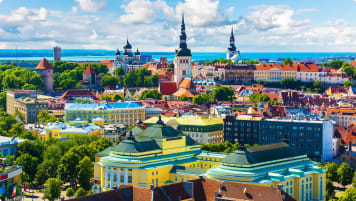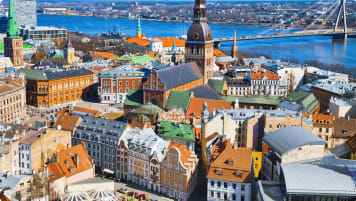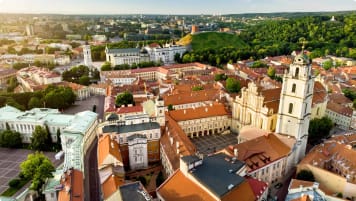Baltic States Guide for mature & senior travellers
Baltic States Guide for mature & senior travellers Odyssey Traveller offers a 21 day tour of the Baltic States for mature and senior travellers. We explore Latvia, Estonia and Lithuania, as well as parts of…
2 Feb 18 · 23 mins read
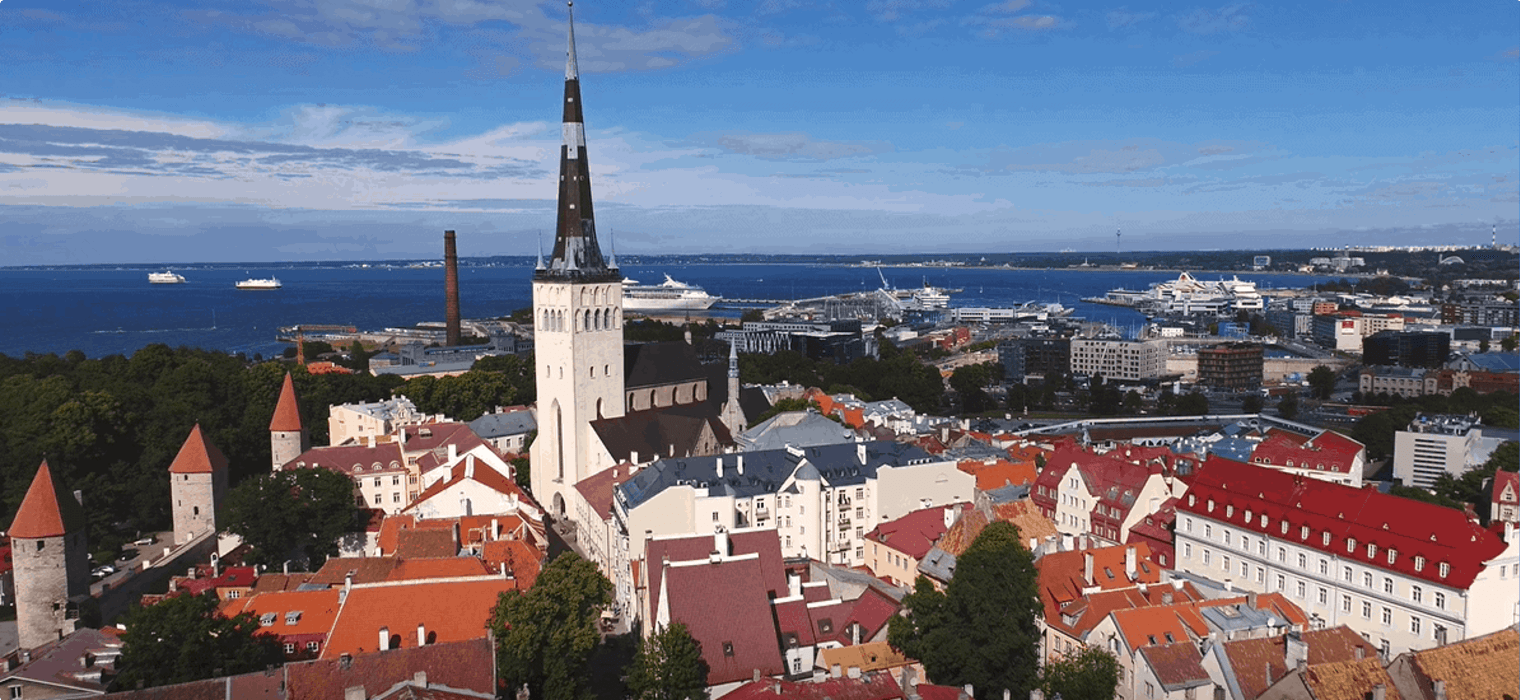
Baltic States Guide for mature & senior travellers
Odyssey Traveller offers a 21 day tour of the Baltic States for mature and senior travellers. We explore Latvia, Estonia and Lithuania, as well as parts of Germany, Poland and Russia, all with the services of a tour leader and our local guides. This post is designed to pique your interest in the Baltic States. It is not a common “Bucket List” tourist destination, but after reading this, you may begin to wonder why!
Discovering the Baltic States
The Baltic States are a diverse region in north-eastern Europe, made up of the counties of Estonia, Latvia and Lithuania. They are named for the Baltic Sea that bounds them on the west and north. The region also shares borders with Poland, Belarus and Russia. With a variety of influences extending to Finland and Germany, the Baltic States are incredibly diverse in character. Rarely has any geographical region been comprised of so many differing ideologies, peoples, and languages: German, Polish, Russian, Lithuanian, Latvian, Estonian, and Finn among them. It is this diversity that makes the Baltic nations such a fascinating travel destination. Add to this its stunning natural and architectural features. The Baltic States boast abundant forests and wetlands, crumbling castles and cities that belong among the most beautiful in the world.
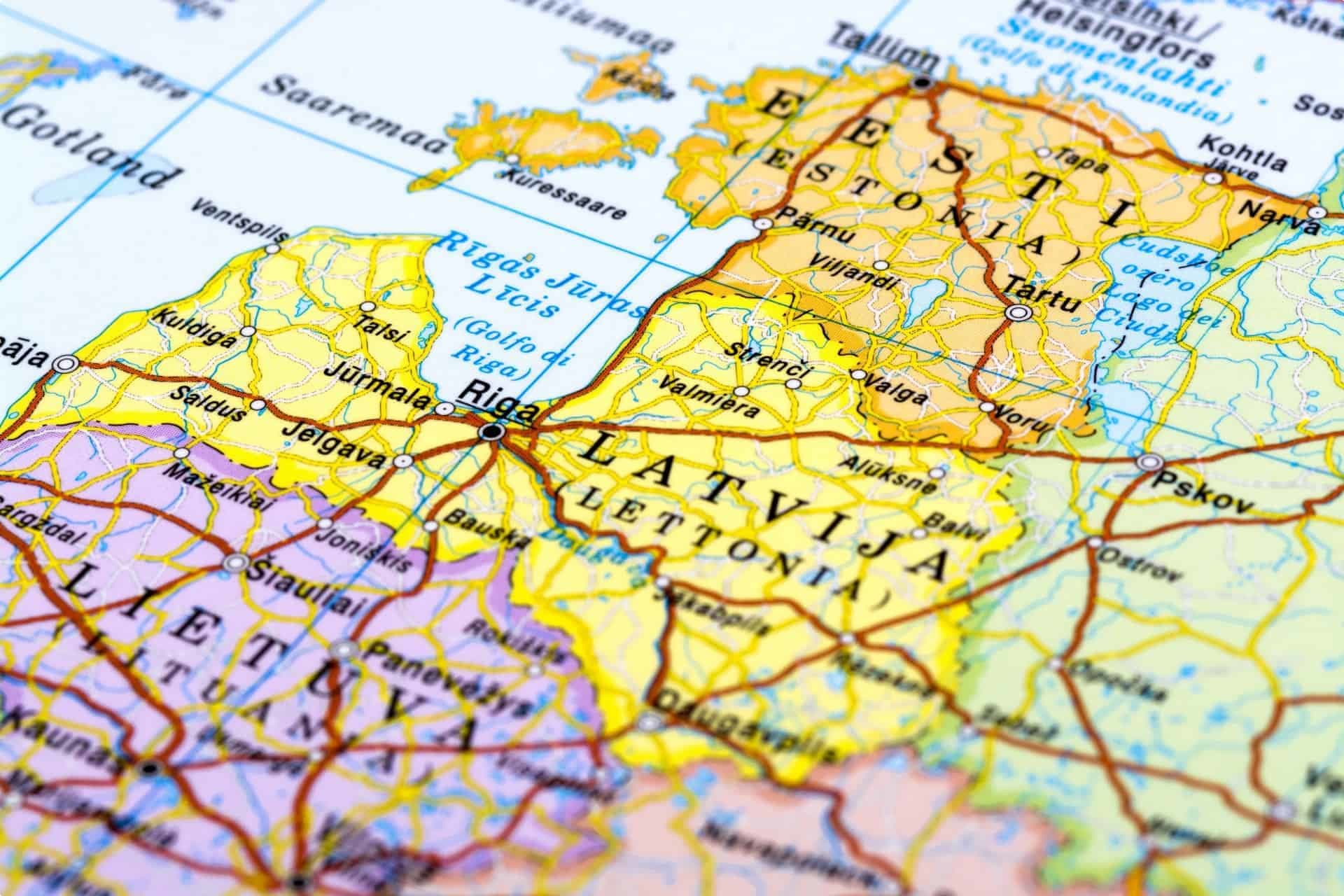
A history of political unrest
But this region has a history of political issues. The last thirty years in particular have captured the imagination of the rest of the world, as we witness the struggle of these countries to navigate their independence, and integrate into Europe and Scandinavia. The Baltic States achieved independence from the Soviet Union in 1991. The period following this has proved challenging, with the bulk of the economy of this region supported by agriculture and industry. The small, open economies of these nations have seen them suffer in the wake of global recessions. So, the Baltic States are also fascinating for those interested in economics, and military and political history. There is something for every traveller in the incredibly diverse cultures and landscapes of the Baltic region.
Something for everyone in the Baltic States
This post is designed to spark your interest in an oft-overlooked part of the world. Read on for details of the best places to visit in the Baltic States. We will discover more about the region’s ancient and recent history, and the ways in which the unique culture of each nation is preserved. Step into the crumbling castles, stand on key sites for the struggle for independence, and cruise along serene lakes. Venture into the forest to the Wolf’s Lair – where Hitler spent more time during World War II than he did in Germany. Trace the winding, medieval paths of Vilnius – Lithuania’s verdant capital. And explore the museums and cathedrals of atmospheric Estonia.
On Odyssey Traveller’s Baltics Small Group escorted Tour of Latvia, Estonia and Lithuania, we also venture into Germany, Poland, Finland and Russia in order to trace the cultures and influences in these colourful nations. Our hope is that you will return from your holiday to the Baltic States with a greater understanding of an incredibly determined and resilient people.
Latvia
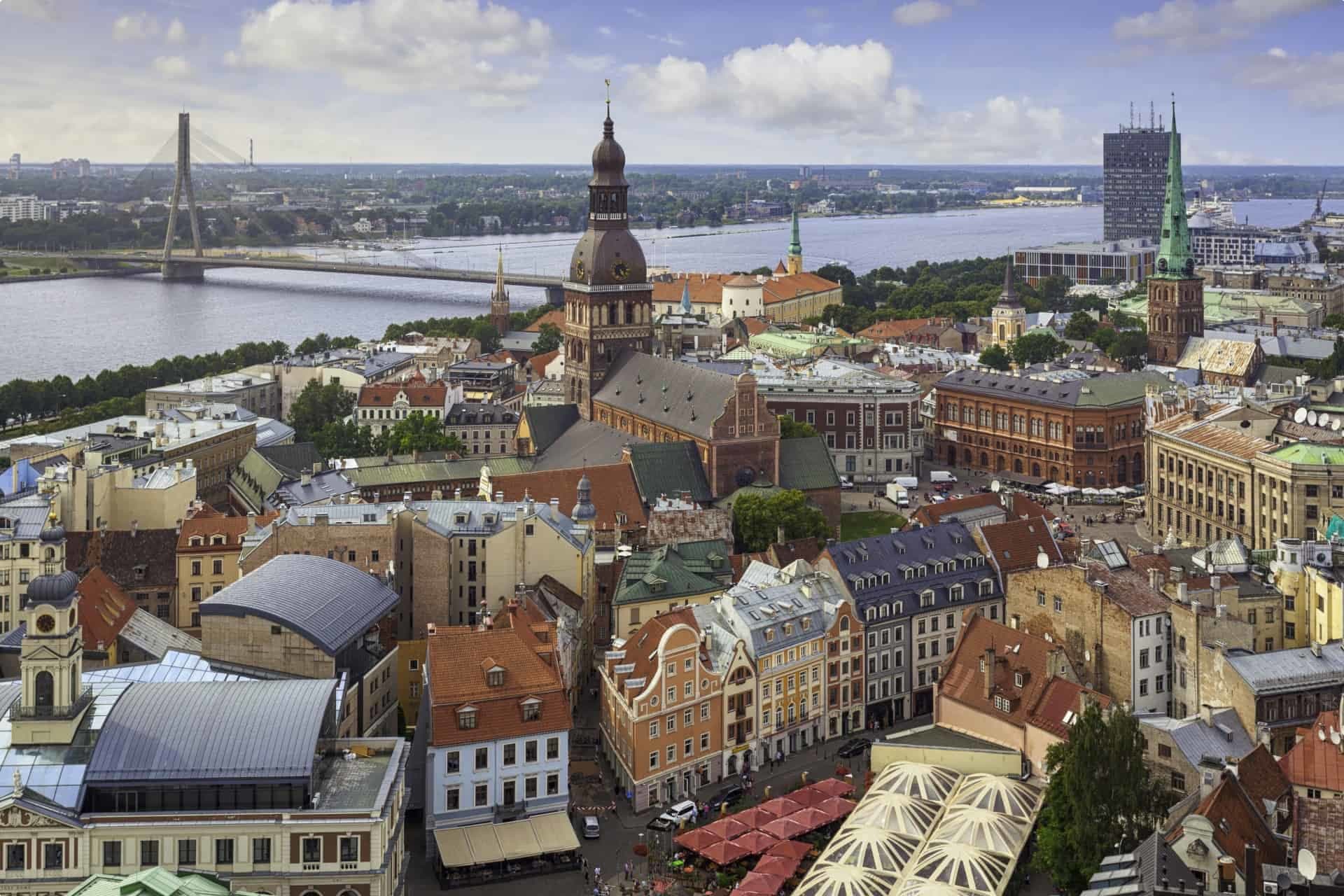
Evidence of civilisation in Latvia dates back to the Stone Age. Latvians descended from tribes that migrated to the region around 2000 BC. Four distinct groups formed: the Curonians, Latgalians, Selonians and Semigallians. There was also the Livonians, who spoke a Finnic language. By the 12th century, some 14 lands occupied the territory of Latvia, each with distinct rulers.
The Pope sent missionaries to these lands later in the 12th century. But conversion to Christianity did not go as smoothly as was hoped. Germans invaded and Livionians were forced to abandon their pagan beliefs. By the 13th century, Germans ruled a large part of what is now modern Latvia. They founded Riga, which became a key site of trade and formed links with Western Europe.
The Livonian War took place in the 16th century, after which time Livonia (now Latvia) fell under Polish and Lithuanian rule. The country was divided among several rulers until the 17th century, when the “Golden Period” of Swedish rule ensued. But the Russians conquered the region during the Great Northern War of 1700-1721. They held power for the next two centuries (and, as we will discover, were to claim it yet again).
During the 19th century, while part of the Russian empire, Latvia underwent key social changes. A class of independent farmers formed, permitting some peasants to repurchase their land. An urban proletarian and influential bourgeoisie developed. The First Awakening was borne of this time, led by Young Latvians. It is associated with an increase in the use of Latvian language in society and in literature.
World War I
World War I devastated what we now know as the state of Latvia. The newly independent stage emerged out of the turmoil on 18 November, 1918. Incredibly, Latvia achieved one of the highest standards of living in all of Europe by the 1930s. And while the Soviets were the first to recognise Latvia’s independence, the 1939 Molotov-Ribbentrop Pact ended this period. This 10 year pact with Nazi Germany saw the states divided among them – with Latvia falling to Soviet rule. Many Latvians were killed or deported to Siberia (where their prospects were equally dire).
There were instances of Latvian uprisings, which contributed to the Germans taking Latvia by mid 1941. Under German occupation, tens of thousands of Latvian Jews were killed. Up to hundreds of thousands of Latvians lost their lives in World War II, with soldiers fighting on both sides of the conflict. The Soviets recaptured Riga – and Latvia – on 13 October 1944.

Soviet Rule
Violence continued as Latvia was forced to adapt to communist ideology. 5000 people rallied against Soviet occupation on the 14th of July, 1987. And on the 23rd of August, 1989, two million Latvians, Lithuanians and Estonians formed a human chain that spanned 650 kilometres. This chain extended from Vilnius, to Riga, to Tallinn, and marked the 50th anniversary of the Molotov-Ribbentrop Pact. A failed Moscow coup in 1991 rocked the Soviet Union just enough for Latvia to finally gain its independence. Read on for further detail on what is referred to as the “Singing Revolution”.
Independence
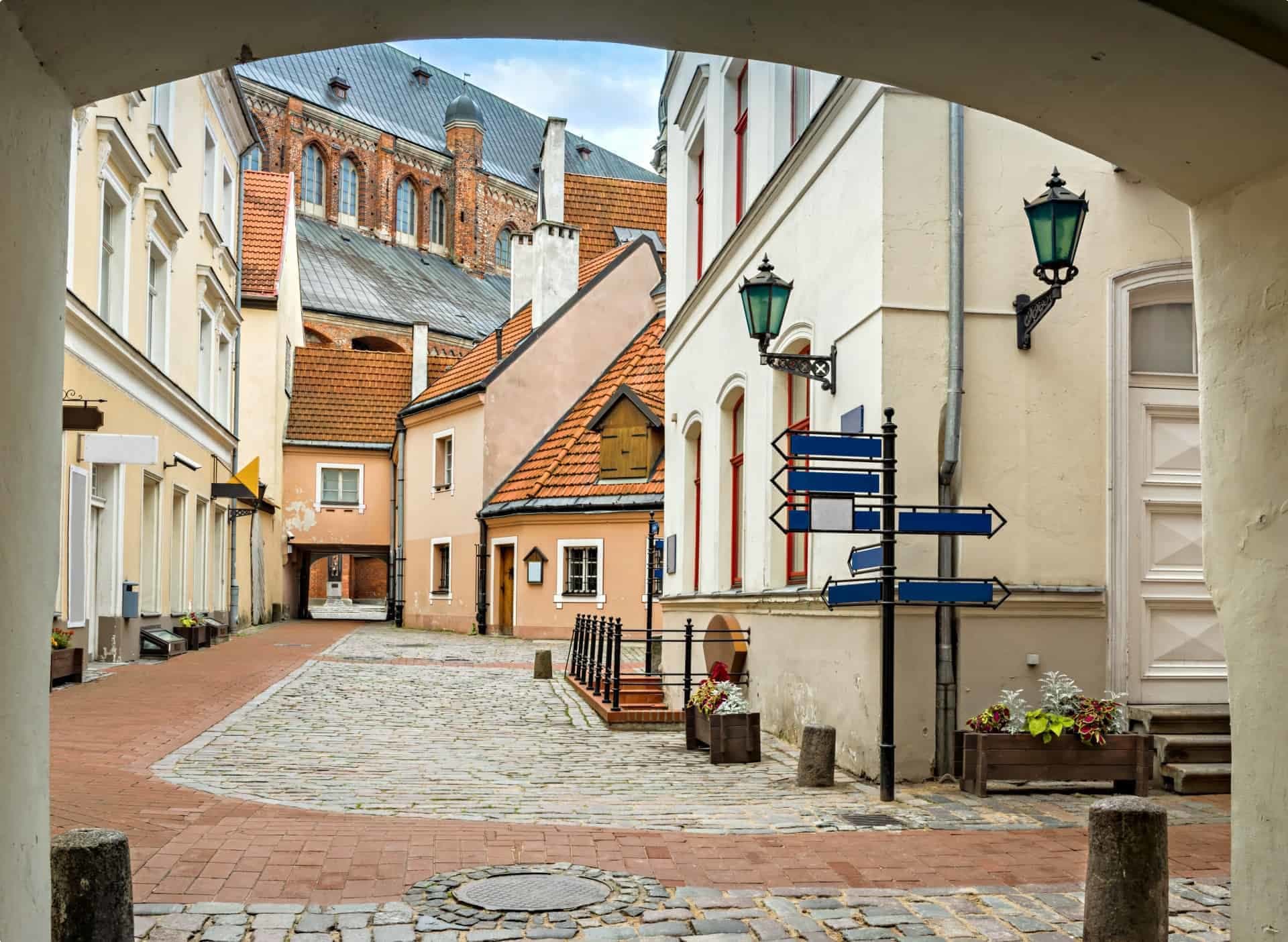
Latvia declared independence on the 21st of August 1991, and within a month, had joined the UN with its Baltic neighbours. Latvia was welcomed to the European Union in 2004, after which time it experienced very rapid economic growth. Unfortunately, this worsened the impact of the global financial crisis. But the proud nation is working its way toward stability, whatever form that may take. In 2016, Latvia became a member of the Organisation for Economic Cooperation and Development (OECD).
Must-see in Latvia
1. Riga
Cosmpolitan Riga cannot be missed. Its well-preserved Historic Quarter conjures images of the city’s history as the ‘Paris of the East’. During the 1930s, Riga was the major post for the West to listen in to ‘The Russian Bear’. The streets thrummed with diplomats, traders and intrigue. Take a guided walk of the city, noting St Peter’s Church and the Blackheads House – a 14th century guild hall which was recently renovated.
2. Sigulda Castle
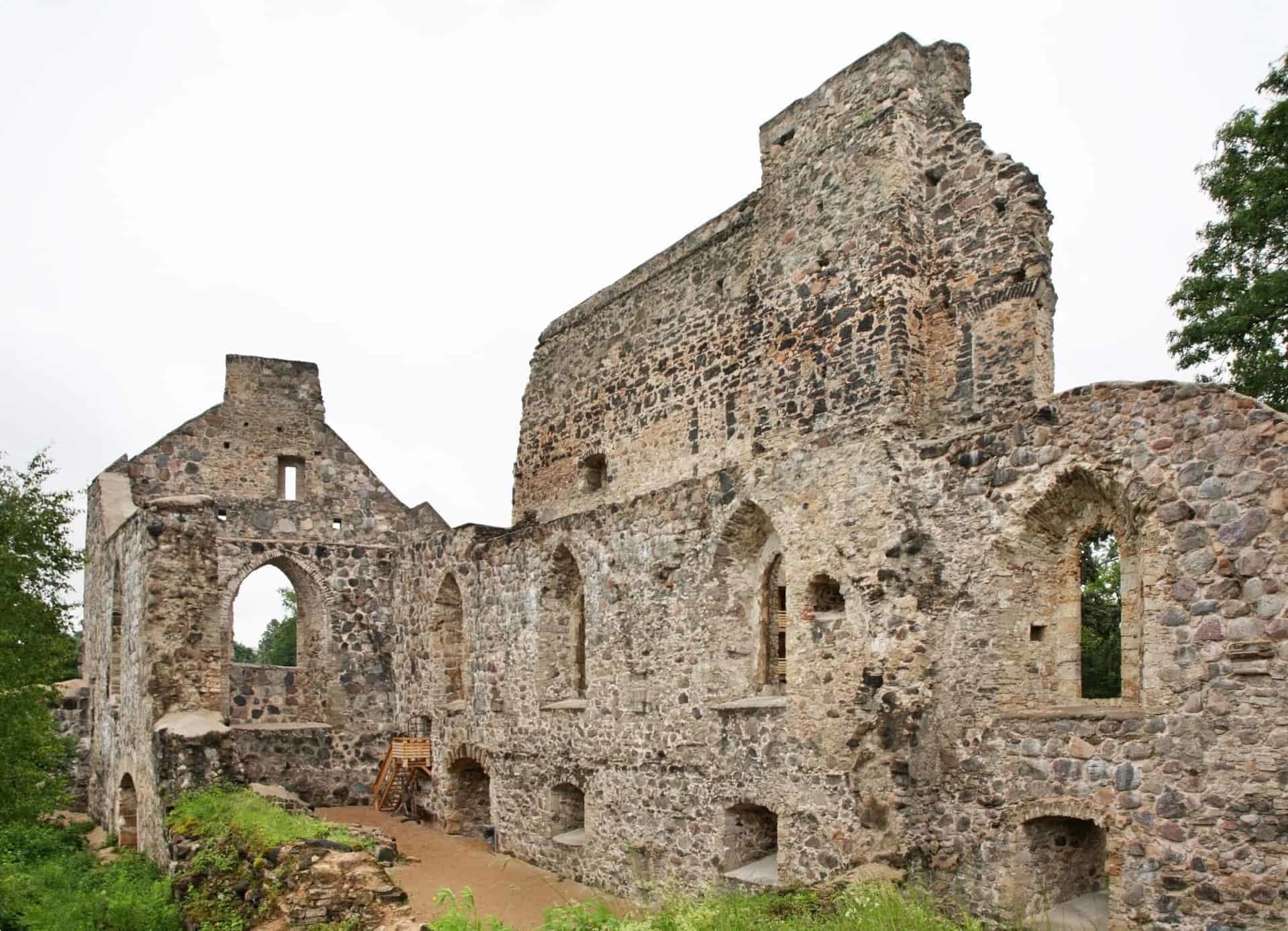
The medieval runs of the Sigulda Castle are located at the edge of the Gauja Valley. The original castle was built as a fortress in 1207. Since then, it has served as a convent, and as the residence of the Lord Marshall of the Livonian Order. The walls were fortified several times during the 20th century as the site became an important tourist attraction. In 2012, it was reopened to visitors, and it is now possible to climb the tower.
3. Jurmala
Jurmala is a resort town at the Baltic Sea. This is called the Baltic’s version of the French Riviera. It boasts a mixture of Art Nouveau and “noveau riche” districts. Even during Soviet occupation, it was a place to see and be seen. Further explore Latvia’s seaside playground with this link to the state’s national tourism website.
4. Turaida Castle

This medieval castle was recently reconstructed. Building began in 1214, under the direction of the Archbishop of Riga to the Livonian Brothers of the Sword. The red-brick construction was fortified throughout the 14th and 15th centuries. But by the 17th century it was losing strategic importance. It was abandoned and left to ruin after a fire in 1776. However, regular archaeological excavations took place here from 1976, and restoration activities followed. The main tower offers views across the picturesque Gauja Valley.
Climate
Latvia has a temperate climate. The coastal regions to the west possess a cooler, maritime climate with mild winters. Conditions become more continental heading east. These parts experience colder winters and hotter summers. Latvia experiences four pronounced seasons of roughly equal length. Heavy snowfall is common during winter. Summer temperatures average at 19 degrees Celsius (66 degrees Fahrenheit).
Environment
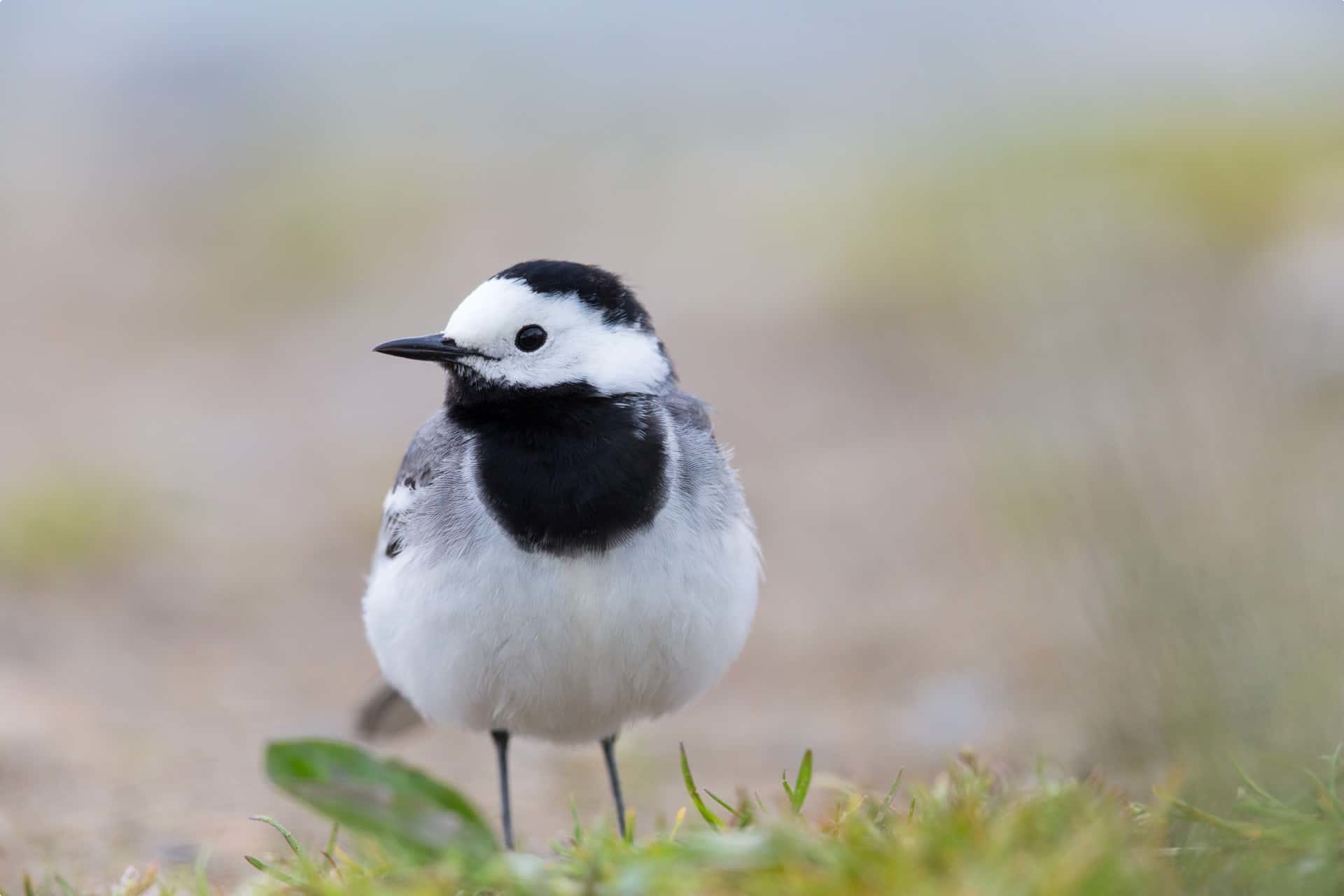
Latvia is typically characterised by forested landscape. It has many rivers, and over 700 national parks, or designated protected areas. This make up around 20% of the country’s total land area. Latvia has a long tradition of wildlife conservation. Roughly 30,000 species of flora and fauna have been registered. Travellers to Latvia should watch for deer, wild boar, lynxes, beavers and wolves. The white wagtail is the country’s national bird.
Latvian people and culture
People in Latvia may appear guarded at first glance. In fact, they are a cautious people, and it is this quality that has helped preserve their culture in the face of so many political struggles. Today, they embrace the changes taking place to globalise their country. You will mostly hear Latvian and Russian spoken, but English is often used by the younger generations in particular. Most Latvians are members of the Lutheran Church. Much of its ethnically Russian population attend Roman Catholic and Orthodox Churches. And some Latvians retain their pagan, pre-Christian beliefs. The popular Midsummer’s Day is a good example of their ability to blend the two – it references magic and sorcery.
The Singing Revolution
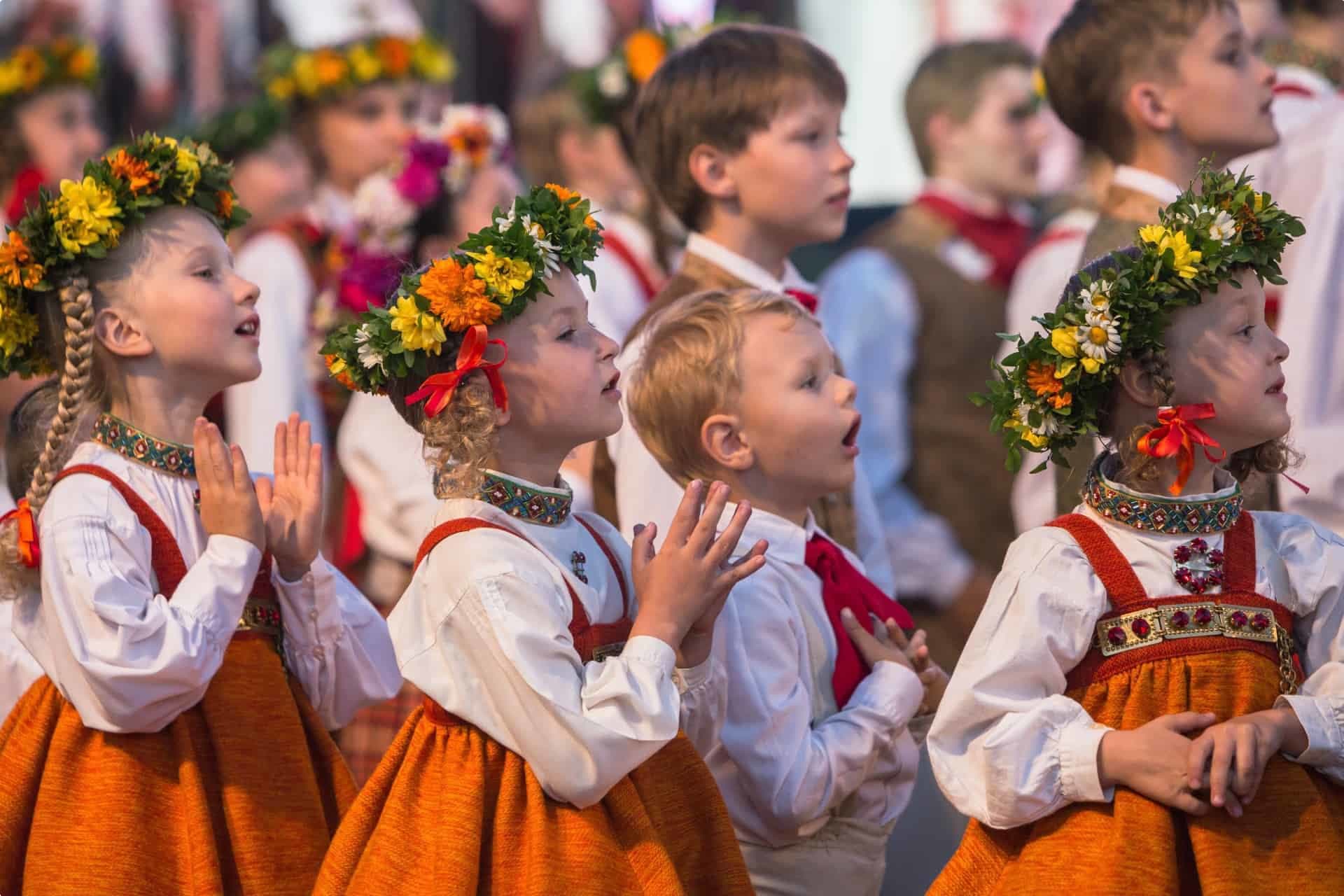
The Singing Revolution refers to events that took place between 1987 and 1991, which led to the restoration of Estonia, Latvia and Lithuania’s independence. The name was coined by an Estonian activist , Heinz Valk, and refers to spontaneous mass singing demonstrations that took place over the 10-11 June, 1988. But in fact, there were many acts of defiance collected under this term, which ultimately proved successful.
Following WWII, the Baltic States were incorporated in the USSR. Mikhail Gorbachev introduced controversial policies to stimulate a flailing Soviet economy. These included policies of “openness” and “restructuring”, aimed to encourage productivity. But instead, they placed limitations on political freedoms. Dissatisfaction among the Baltic States was rising, particularly with the release of scandalous Moscow government secrets and events in Afghanistan and Chernobyl. The Baltic States sought to distance themselves from the Soviet Union. Estonia, in particular, was drawn to the Western lifestyle they accessed via connections to Finland. The Soviet government’s plans to mine phosphate in Estonia were met with great resistance. Similarly, threats to Latvia’s environmental and cultural heritage came in the form of a planned hydroelectric power plant. By the close of the 1980s, campaigns were aimed at freeing the non-Russian Soviet states.
The Human chain, and human shields
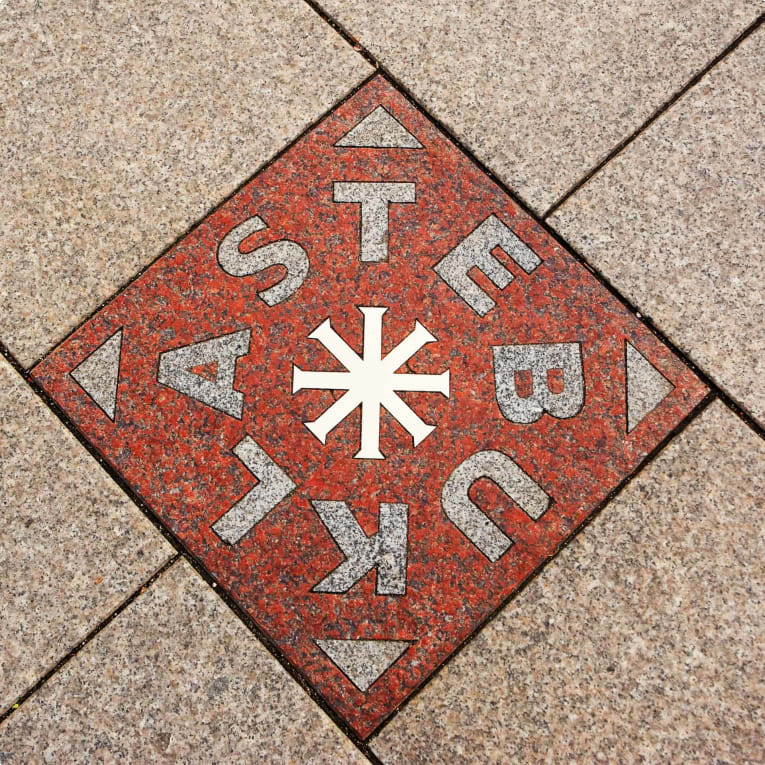
At mass demonstrations held in Tallin, Estonia, participants began to sing patriotic songs. Patriotic songs gained in popularity in Latvia and Lithuania, too. Simultaneously, Roman Catholic hymns were on the rise in Lithuania, and this culminated in the reclamation of the Vilnius Cathedral – then used as a fine arts museum – by the Catholic community. Next, national symbols were gradually restored, and the Lithuanian national anthem legalised in November 1988. On the 23rd August, 1989, the human chain (or, ‘Baltic Way’) formed, linking Tallin to Vilnius in Lithuania.
Over the course of the Singing Revolution, many acts of protest and defiance took place. In 1991, Soviet tanks rolled into Estonia, and locals acted as human shields to protect radio and television stations. There was relatively little bloodshed, and the tanks retreated. A similar event took place in Lithuania, however, and hundreds of non-violent protesters were killed by the Soviet military: an event they refer to as Bloody Sunday. But after five decades of incorporation into the Soviet Union, Lithuania was the first republic to declare independence. Latvia and Estonia followed, and the Soviet Union dissolved.
Estonia
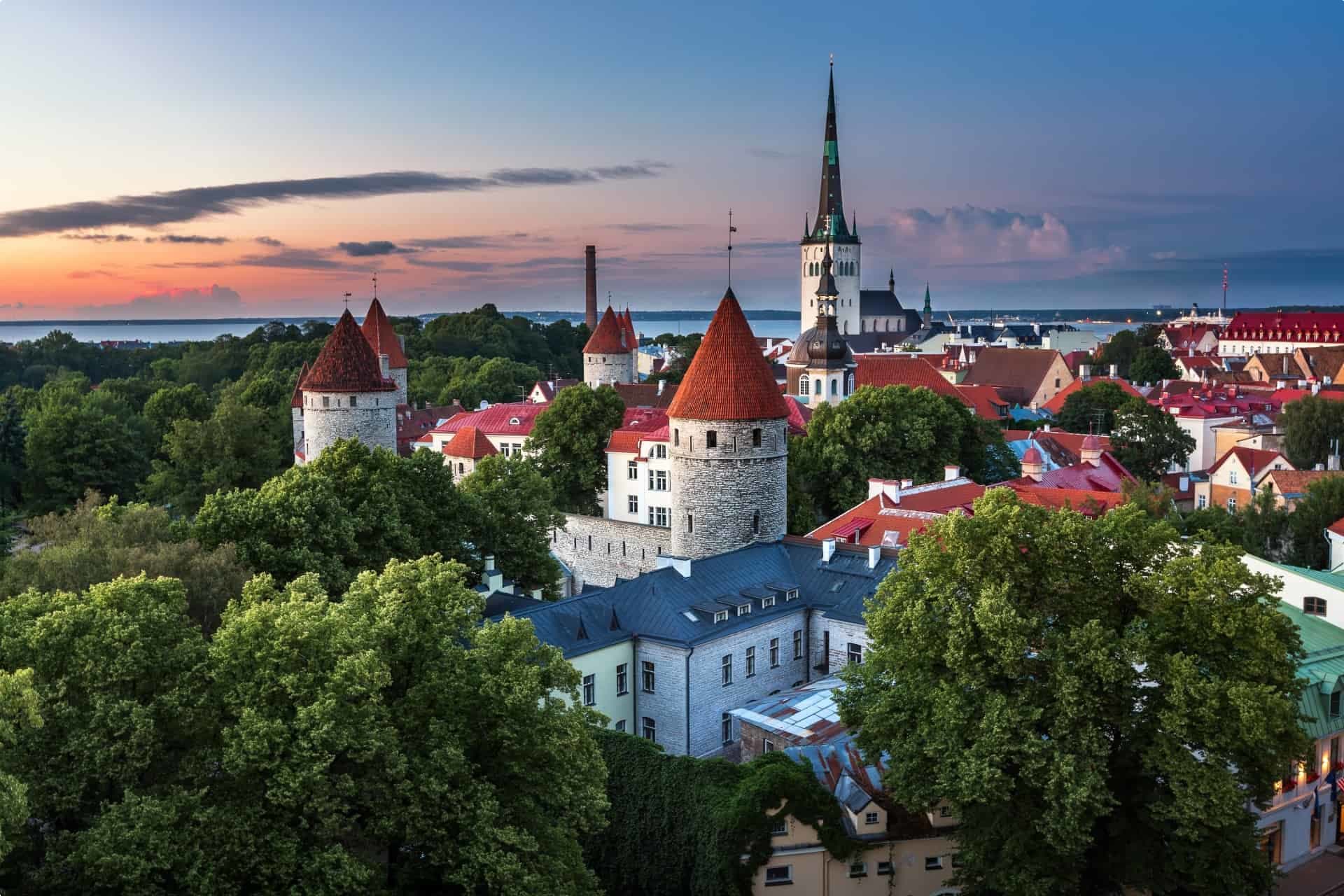
Estonia is the most northerly of the three Baltic States, and the most Scandinavian in atmosphere. Ethnically, the Estonians and Finns are cousins. With Estonia just 80 kilometres across the Gulf of Finland from Helsinki, the country is creeping socially and economically closer to the western-style economy of Finland. Capital Tallinn has an aura of the 14th and 15th centuries, with its jumble of medieval walls and turrets, spires, and winding cobbled streets. Estonia is made up of over 1500 islands. It has become one of the most economically successful of the EU’s newest eastern members.
History of Estonia
The oldest known sentiment in Estonia dates from around 11,000 years ago. This was the Pullu settlement, which occupied the banks of the river Parnu in south-western Estonia. The Mesolithic period saw the semi-nomadic Kunda culture, made up of hunters, gatherers and fishers. The Narva culture is associated with the Neolithic period. Corded Ware culture appeared around 3200BC, relics of which indicate a transition to agriculture and animal husbandry. Bronze objects survive the Iron Age, and suggest active communication between Estonian, Scandinavian and Germanic tribes. Following the Iron Age, threats began to appear from different directions.
The arrival of the Germans in the 12th century greatly impacted Estonia, like Latvia. The Knights of the Sword is the name given to these German crusaders. Southern Estonia was rapidly subjugated. The north fell to Denmark.
A second band of Germans called the Teutonic Order subordinated the Knights of the Sword. Denmark sold northern Estonia to the Teutonic Order in the 14th century; so, Estonia remained largely under German rule till the 20th century. Exceptions to this include a brief period of Swedish rule in the 17th century. Russians took over following the Great Northern War of 1700-1721.
The Soviets abandoned the Baltic countries to Germany under the Treaty of Brest-Litovsk in 1918, but Estonia declared independence. The resultant War of Independence took a toll and Estonia plunged into economic despair, even while it bloomed culturally.
Under the Molotov-Ribbentrop pact of 1939, Estonia fell into the Soviet sphere. But following liberation in 1991, Estonia, like Lithuania, went on to join NATO and the European Union. Economically, Estonia is deeply integrated with its northern neighbours Finland and Sweden. It is recognised as as high-income economy and has earned the nickname the ‘Baltic Tiger’ for its rapid growth.
Estonian culture
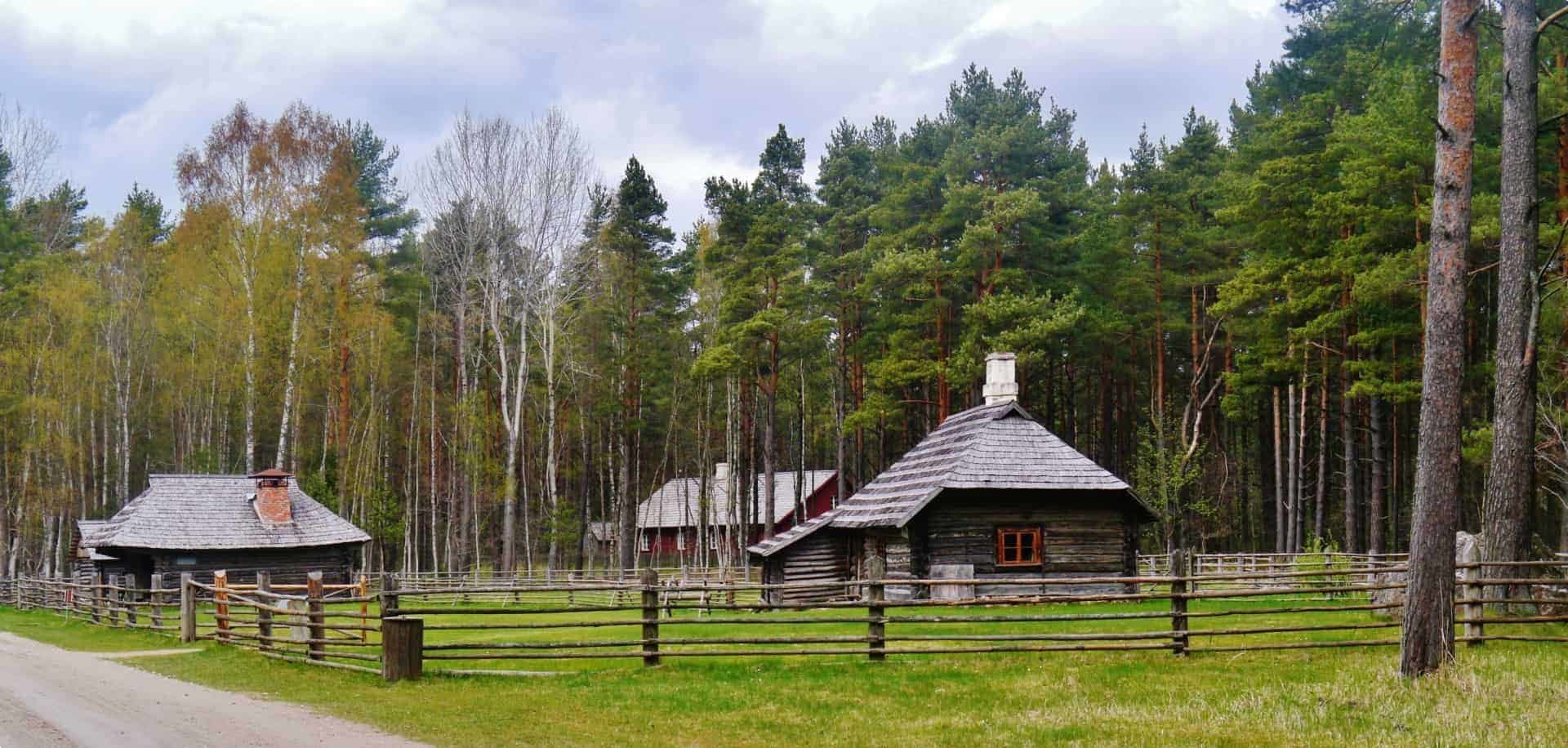
Estonians are described as quite liberal and tolerant people, but they proudly defend their culture – given their history it is understandable they want to keep it close to them. They are typically well dressed, and hardworking, with many people in the technology sector. Estonia boasts one of the world’s fastest wifi speeds, which is entirely free. It was also the birthplace of Skype. A great way to immerse yourself in Estonian culture is via its food. Try mulgipudur if you can get your hands on it – a peasant dish of grain porridge and potato, served with bacon on top. It is more likely to be found in taverns than fancy restaurants, and is a quintessentially Estonian experience. Likewise, leivasupp, which is a sweet bread soup flavoured with cinnamon and fruits.
Setomaa is an ethnic minority in South Eastern Estonia and into Russia. Seto culture is fascinating and unique, and includes strong singing traditions. In fact, Seto singing is UNESCO World Heritage-listed in the category of intangible cultural heritage.
e-Estonia
Since its independence, Estonia has been developing its’ digital technologies. It now offers a range of e-services connected on a single government platform, via something called X-road. These services include voting – which can now be done from home, simplified taxes, banking, and even storing school reports and university grades. The concept emerged out of a policy of “once only” for paperwork – to avoid having to fill in tedious applications again and again.
The innovation is presented as both cost-saving and equalising. It reportedly saves Estonia 2% of its GDP per year in salaries and expenses. But perhaps the most exciting application of this system is its potential for a borderless economy. Estonia offers “e-residency”, meaning foreigners may log into this system and partake in some of Estonia’s services, without ever having set foot on its land. Estonia’s relatively low business tax rates, combined with liberal regulations for new technologies (Estonia tests driverless cars on all of its roads, for instance), attract start-up businesses.
“We believe that innovation happens anyway,” says Viljar Lubi, Estonia’s deputy secretary for economic development. “If we close ourselves off, the innovation happens somewhere else.”
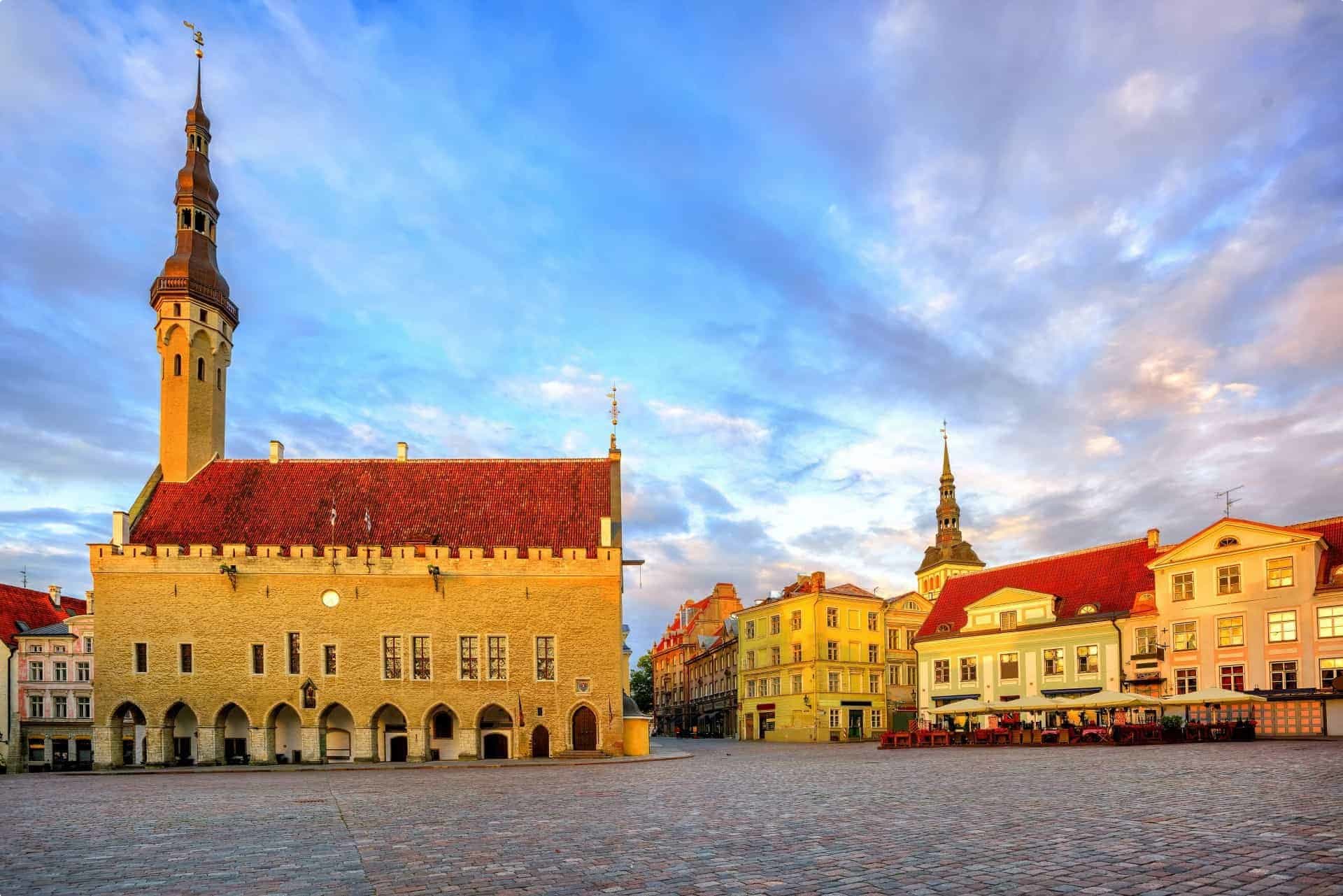
The X-road
X-road must be technically robust for the sake of people’s privacy. A dentist may log in to access your details, but she will only be able to see what is relevant to your appointment. Privacy is upheld even between doctors. And a teacher can access your grades, but will never see information on your finances. It is a tenet of the system that an individual owns all the information recorded about him or her.
On the flip-side, though, the system allows for greater transparency. Land registry, business connections and investments are considered public information, and are searchable for politicians and the wealthy, for example. The system is continuing to develop. So far, 88% of Estonia’s 28,000 e-residents are men, and officials are working to attract female entrepreneurs across the world. But the technology is quietly flourishing, and recently Finland joined x-road too. To read more about e-Estonia, the New Yorker produced a fascinating insight into the system, available here.
Best spots in Tallin, Estonia
We will experience the history and architecture of Tallinn with a guided walk of the city. Our walking tour includes a visit to the Dome Cathedral, views of the Town Hall, and St. Nevsky Russian Cathedral. We also benefit from a fascinating insight into the rural economy of Estonia, with a visit to the open-air ethnographic museum at Rocca Al Mare.
1. Dome Cathedral
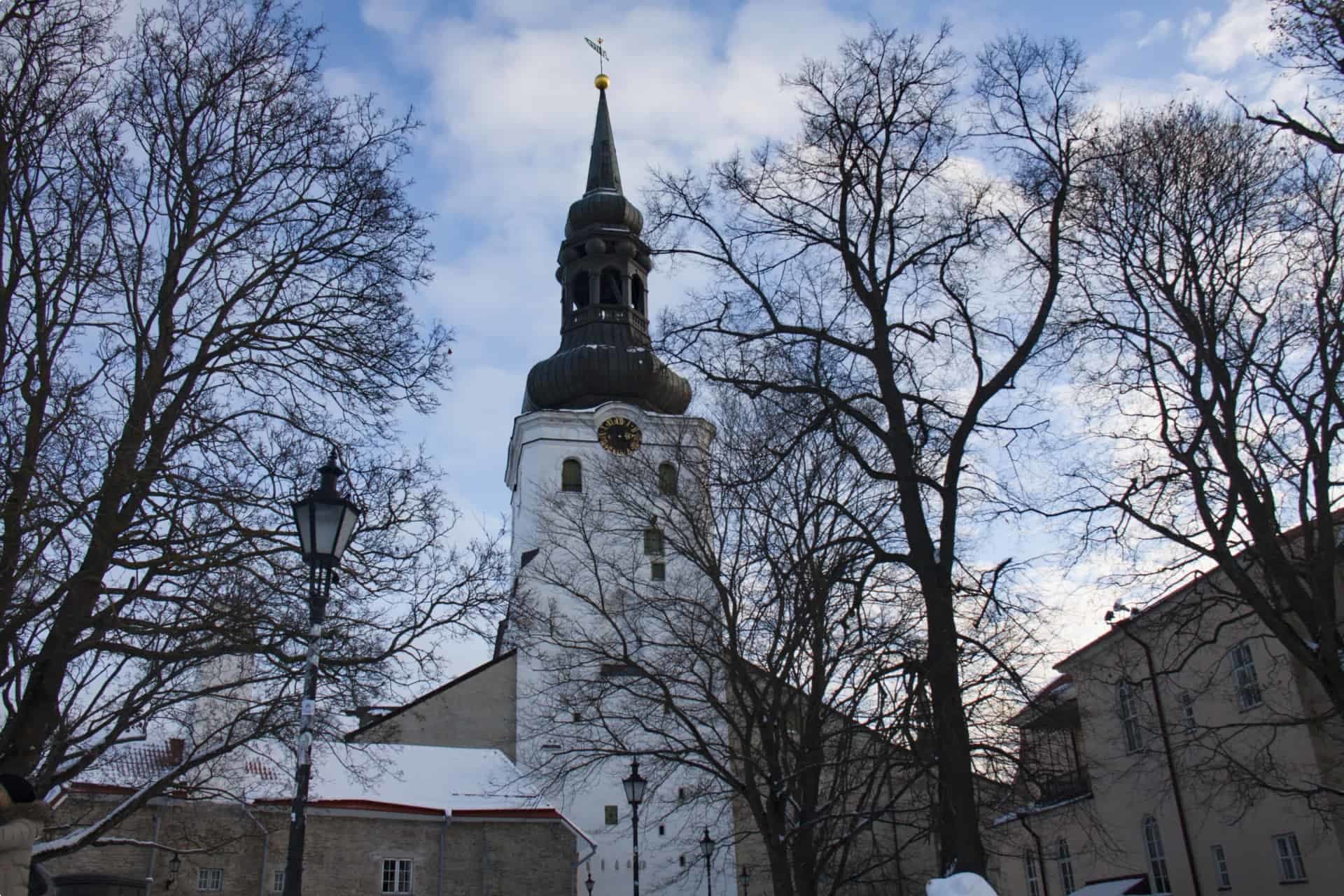
St Mary’s Cathedral (or Dome Cathedral as it is commonly called) is the oldest church in Tallinn, and in mainland Estonia. It was originally built by the Danes in around 1219, when they had invaded the region. The Dominican Monks arrived in 1229, and begun to replace the wood structure with a stone one. But is was desecrated in conflict by 1233. It was consecrated again in 1240, but reconstruction of the incomplete building did not commence until the 14th century. Over one hundred years, the cathedral was enlarged and developed. It was damaged in a severe fire in the 17th century, though. But again, it was repaired, and today, reflects centuries of architecture and furnishings.
2. Town Hall
This is the oldest Town Hall in the Baltic States and Scandinavia region. In 2005, it was awarded second prize in the category of conservation of Architectural Heritage for the revival of the last surviving Gothic Town Hall in Northern Europe and the exemplary revealing of all the historical layers of this icon of the great European tradition of municipal power.
3. St Nevsky Russian Cathedral
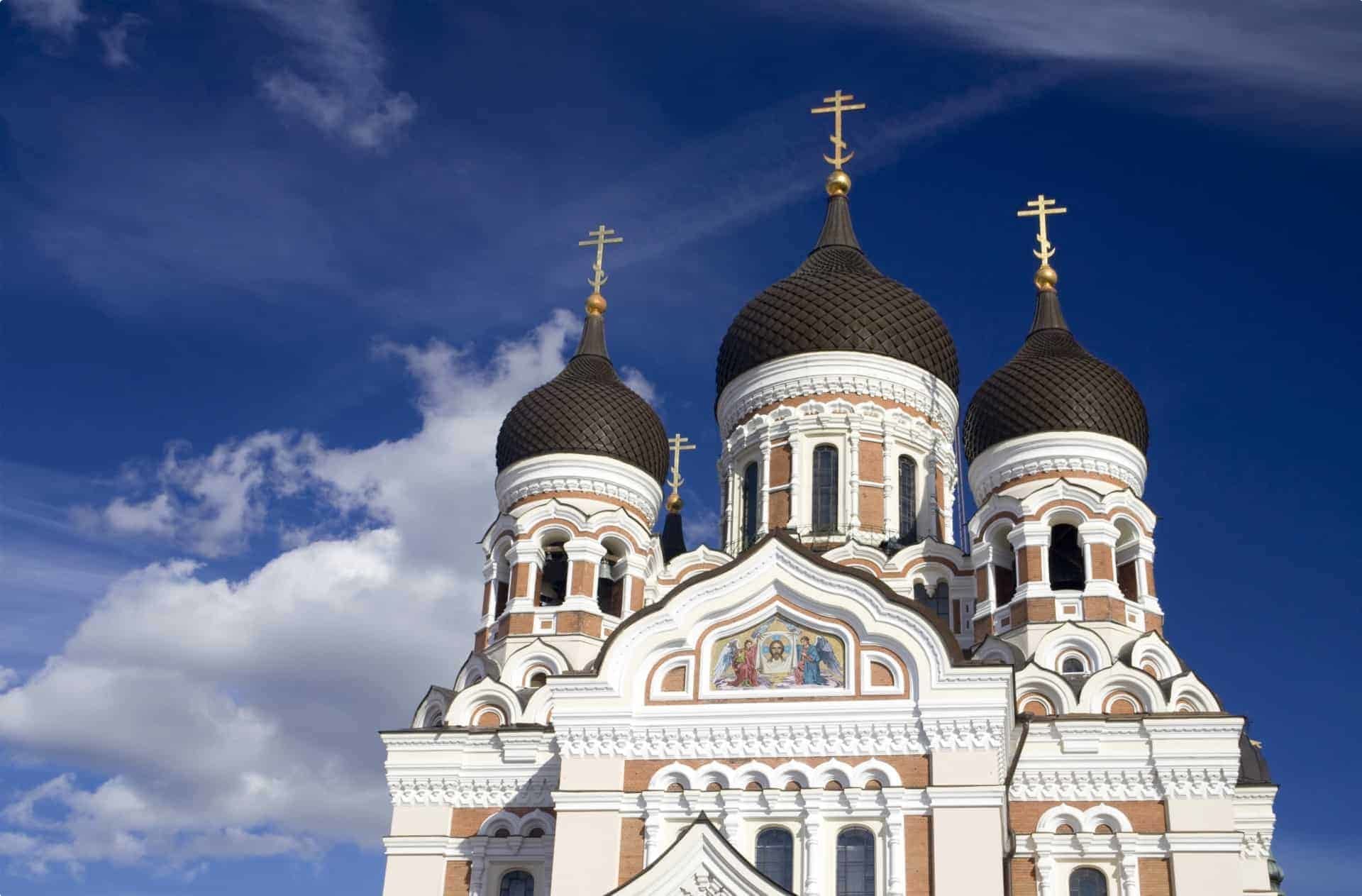
A Russian Revival style building from the late 19th century, this orthodox cathedral is dedicated to St Alexander Nevsky. As the USSR was officially non-religious, many churches including this cathedral were left to decline. The church has been meticulously restored since Estonia regained independence from the Soviet Union in 1991.
4. Estonian Open Air Museum
This wonderful museum at Rocca Al Mare showcases Estonia’s rural traditions. It features fourteen farms that give insight into life in the 18th to 20th centuries. It include a church, fire station, school house – all the services you would expect to find in a traditional rural village. The Museum’s store sells Estonian handicrafts and foods, and it is even possible to take a horse ride here. It’s a charming little step back in time.
Lithuania
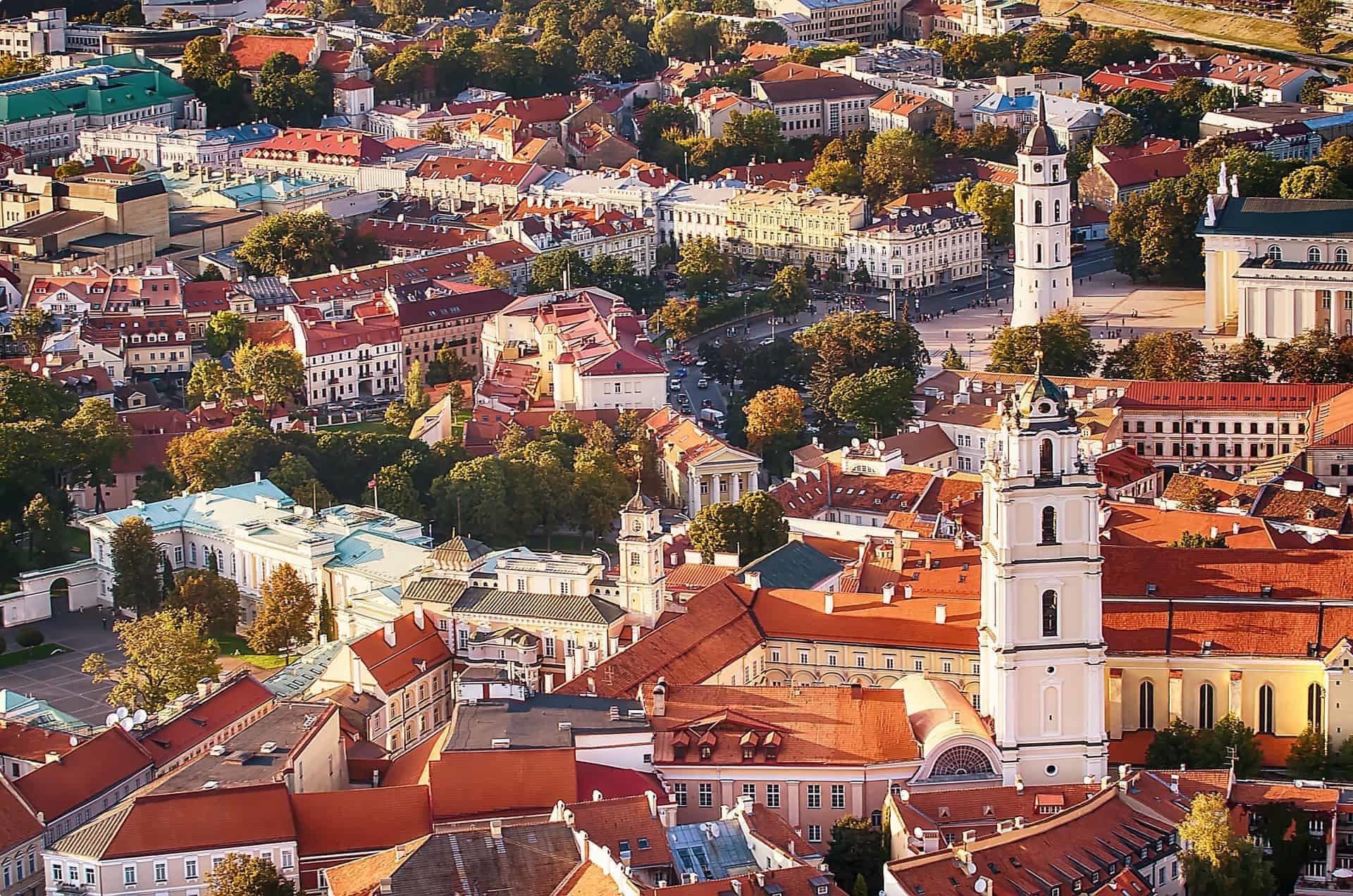
Lithuania is the southernmost of the Baltic States, bordering Poland, Latvia and Belarus. One of Lithuania’s unique qualities is that it’s historic quarter attracts as many locals as tourists – this differentiates Vilnius from the capitals of the other Baltic nations. The labyrinthine, 13th century centre remains a deeply integrated part of the city, and the hearts of its residents. Like Latvia and Estonia, there are still trace of the bleak Soviet era, but Lithuania, too, is a nation in transition. It has a stunning environmental landscape, and attracts lovers of nature. But Lithuania also offers urban delights in the form of Gothic, Renaissance and baroque architecture, crumbling castles and timeworn streets.
Curonian Spit

One of Lithuania’s greatest attractions is its coastline, including a curved sand dune peninsula called the Curonian Spit. Human habitation of this site dates back to prehistoric times, and it continues to be shaped by both human and environmental factors. Unfortunately, the Spit suffered from poor human management, but attitudes shifted dramatically in the 19th century. Lithuanians began to take conservation of the site very seriously, and these efforts persist today. The community endeavors to work in harmony with this UNESCO listed site in order to preserve what the organization calls its Outstanding Universal Value. The site also includes old wooden fisherman’s houses which are deemed vulnerable to damage. Reforestation and stabilisation efforts have helped to manage erosion, and visits to the site are limited, for the sake of the integrity of this site. Read more about the Curonian Spit and conservation efforts on the UNESCO website.
Lithuania’s prehistory
It’s believed that Lithuania was established by the meeting of two cultures, and people arrived in the 10th millennium BC from the Jutland Peninsula (now Danish and German territories) and present-day Poland. As the temperature warmed by the 8th millennium BC, the settlers tended to hunt locally, eventually domesticating animals and establishing more sophisticated dwellings. Agriculture did not emerge until the 3rd millennium BC; it is believed to have been stalled by the harshness of the climate and terrain.
The ancient Baltic tribes maintained trade contacts with the Roman Empire, but held their distance politically. Again, the harshness of the terrain likely made it unappealing to visitors, and Lithuania was able to develop quite a unique identity, rather than integrating into Europe.
A distinctive language
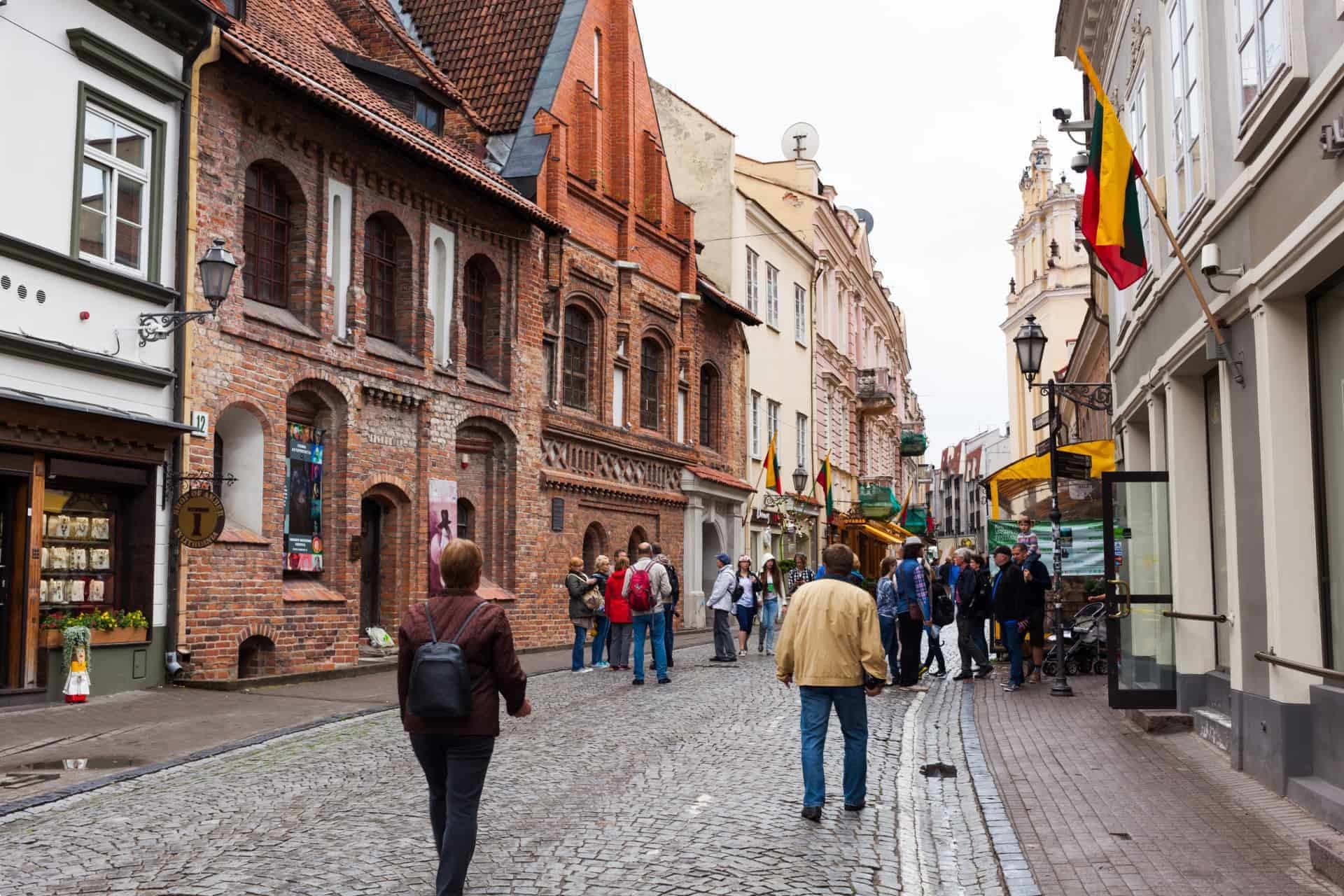
The Lithuanian language is deeply connected to its Indo-European roots. It developed in the 7th century, making it the oldest surviving Indo-European language – many phonetical and morphological aspects are still intact. This is a real source of pride for present-day Lithuanians. It is an important part of their national identity.
The Age of the Vikings
The Baltic tribes were subjected to raids by the Vikings and Denmark between the 9th and 11th centuries – for more on the Age of the Vikings, click here. By the 12th century, the Lithuanian region became increasingly powerful, and involved in raids to the Novgorod Republic. German settlers arrived toward the end of this century, and Lithuania maintained the upper hand. Lithuania’s well developed military triggered a struggle for power, and this initiated the formation of early statehood: the Grand Duchy of Lithuania.
The Grand Duchy of Lithuania
The Grand Duchy of Lithuania existed from the 13th to mid-16th centuries. The Baltic states cooperated and consolidated early on, assisting them to exert power upon surrounding nations and the Livonian Order. But the German military orders, the Livonian Brothers of the Sword and the Teutonic Knights, worked to convert the area to Christianity. In 1236, the pope declared a crusade against the Lithuanians.
Under the rule of Mindaugas, Lithuania’s first Grand Duke, the Baltic tribes resisted, and expanded their power. But in 1250, Mindaugas consented to being Baptised by the Teutonic Order. HE relinquished parts of Lithuania in return for a royal crown. This provided him with military support to confirm his rule over Lithuania. In 1253, with papal support, the Kingdom of Lithuania was established for the first and only time in history.
The Samogitians were an independent tribe in Lithuania, and played a crucial role in defending against the Teutonic Order and Knights of the Sword. They agreed to submit to Mindaugas’s rule on the condition he abandon the Christian religion. Mindaugas did so, and also strengthened defenses against the German Teutonic Order. With this, he is said to have established the basic tenets of medieval Lithuanian policy.
Lithuania’s expansion
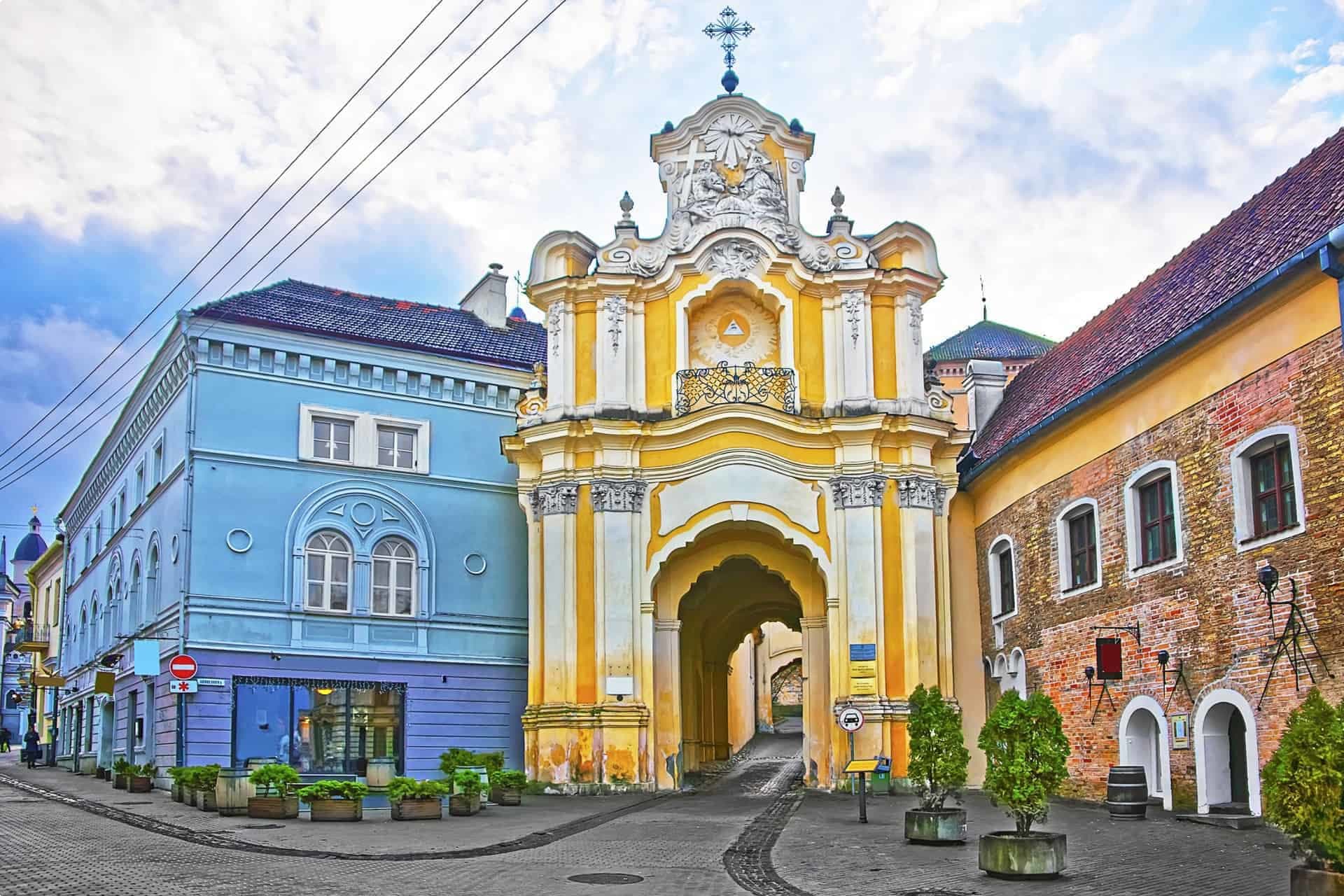
Over the next century, Lithuania continued to expand and by the end of the 14th century, it was one of the largest powers in Europe. It incorporated parts of present day Ukraine, Belarus, Poland and Russia. In 1385, the Grand Duke accepted Poland’s offer to be king, and through this union, Lithuania was finally Christianised. It was one of the last pagan areas in Europe to do so.
This union between Lithuania and Poland meant that they were able to defeat the Teutonic Knights once again, in 1410 at the Battle of Grunwald. The Kingdom of Lithuania passed from Jogaila to Vytautus in 1429, but following the deaths of both men, Lithuanian nobility tried to break the union with Poland. However, Lithuania needed Poland again at the end of the 15th century, when the Grand Duchy of Moscow became an increasing threat. At the Battle of Orsha in 1514, the smaller Polish-Lithuania forces defeated the Muscovites.
The Polish-Lithuanian Commonwealth
Throughout the 16th century, the Livonian War raged. Russia gained power under the ruthless reign of Ivan IV (Ivan the Terrible). Under increasing pressure, Lithuania offered to split Livonia with Russia, but this offer was rejected – Russia wanted all of Livonia (present day Latvia), including Riga. In 1569, the Polish-Lithuanian Commonwealth was formed, and the Duchy of Livonia came under their joint sovereignty. They signed a three-year truce with Russia, during which time the Commonwealth’s King died, with no clear successor. Lithuanians forwarded one of their own candidates in a bid to retain autonomy, but Ivan demanded Kiev, an orthodox coronation to parallel Russia’s. But the electorate rejected both options, and instead settled upon Henry of Valois, brother of King Charles IX of France.
Meanwhile, the Polish part of the Commonwealth was felt in Lithuania. Though Lithuania retained its institutions, their politics, language and culture was influenced by Poland. The Kings of Poland and Grand Dukes of Lithuania were elected by nobility. Come the 18th century, the parliament adopted legislation designed to redress the “Golden Liberties” taken by the disproportionately powerful elite. The constitution implemented more diplomatic measures, including protection of peasants. It was drafted in relation to the U.S. constitution, and is thought to be the world’s second oldest of its kind.
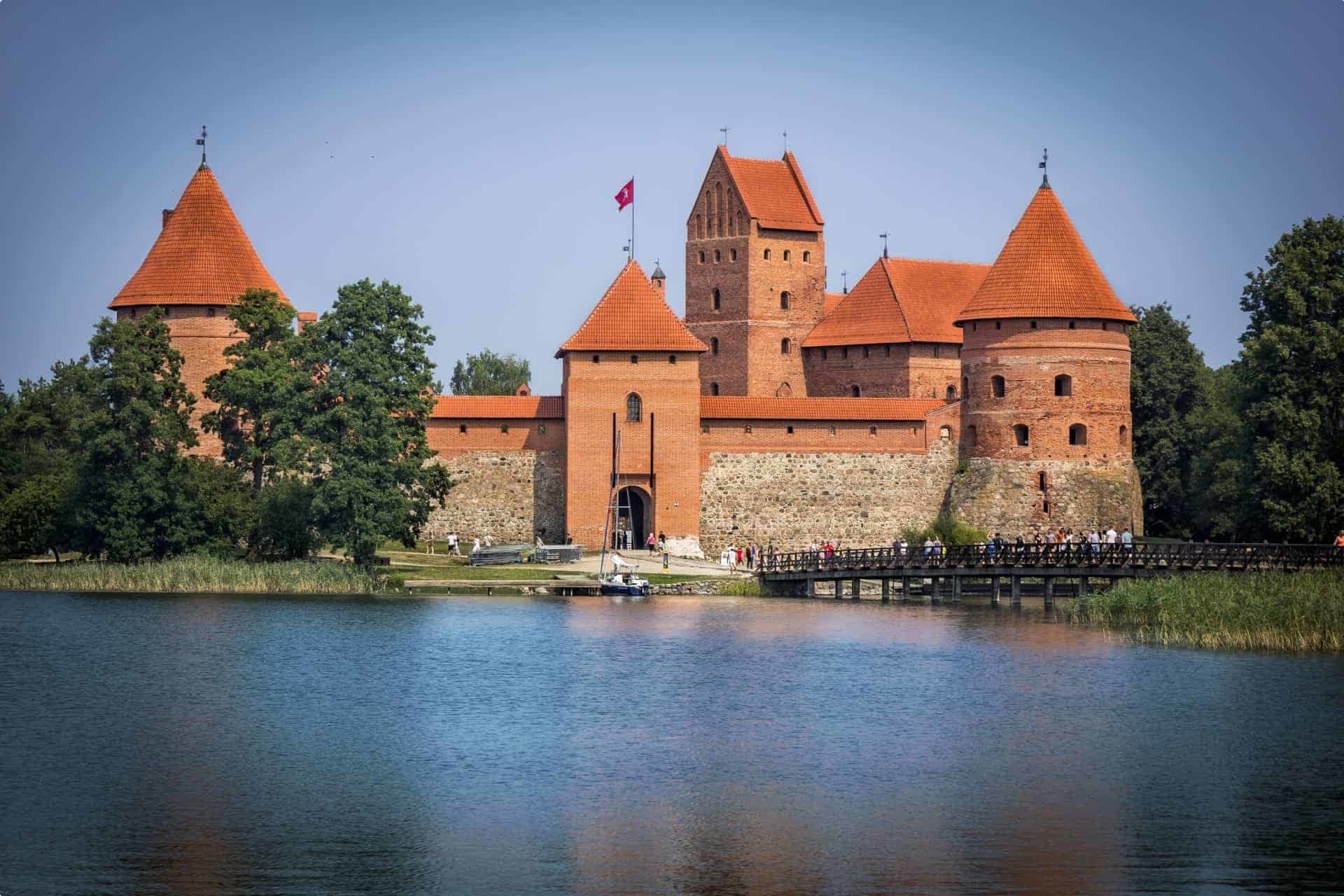
The Russification of Lithuania
These Golden Liberties contributed to Lithuania’s political struggles following the Northern Wars (1665-1661) and Great Northern War (1700-1721). Devastated by the Swedish army, Lithuania plunged into a depression, exacerbated by the plague and famine. Russian powers came to dominate, and by the end of the 18th century, the Commonwealth was partitioned among Russia, Prussia and Hapsburg Austria. The largest area of Lithuania was absorbed into the Russian Empire. As a result, Lithuanian institutions and presses were banned. However Lithuania developed a sophisticated book smuggling and home schooling network that mitigated against Russification.
A German union
Germany came to occupy the territory of Lithuania in 1915. Again, Lithuania’s hard-fought national identity was crushed, and personal freedoms restricted. But the Lithuanian intelligentsia began looking for ways to restore independence. They proposed to reinstate Lithuania’s ethnographic borders, with Vilnius as capital. Lithuania was to sever ties with all other countries and enter into an eternal union with Germany – an unpopular suggestion among some Council members.
But as Germany was losing the war, the union was abandoned. This resolution, adopted on the 16th February 1918, was recognised as the Act of Independence of Lithuania. This state lasted until 1940, when WWII reached Lithuania, and the USSR took hold. The, on March 11, 1990, Lithuania became the first Soviet Republic to announce its secession from the USSR.
Climate
The climate of Lithuania is typically European continental, characterised by warm, dry summers and cold winters. Snowfall and subzero temperatures can be expected in parts of Lithuania. Owing to its proximity to the Baltic sea, the weather can be breezy, but on a warm summer evening, this is just what you need.
Top historic sites in Lithuania
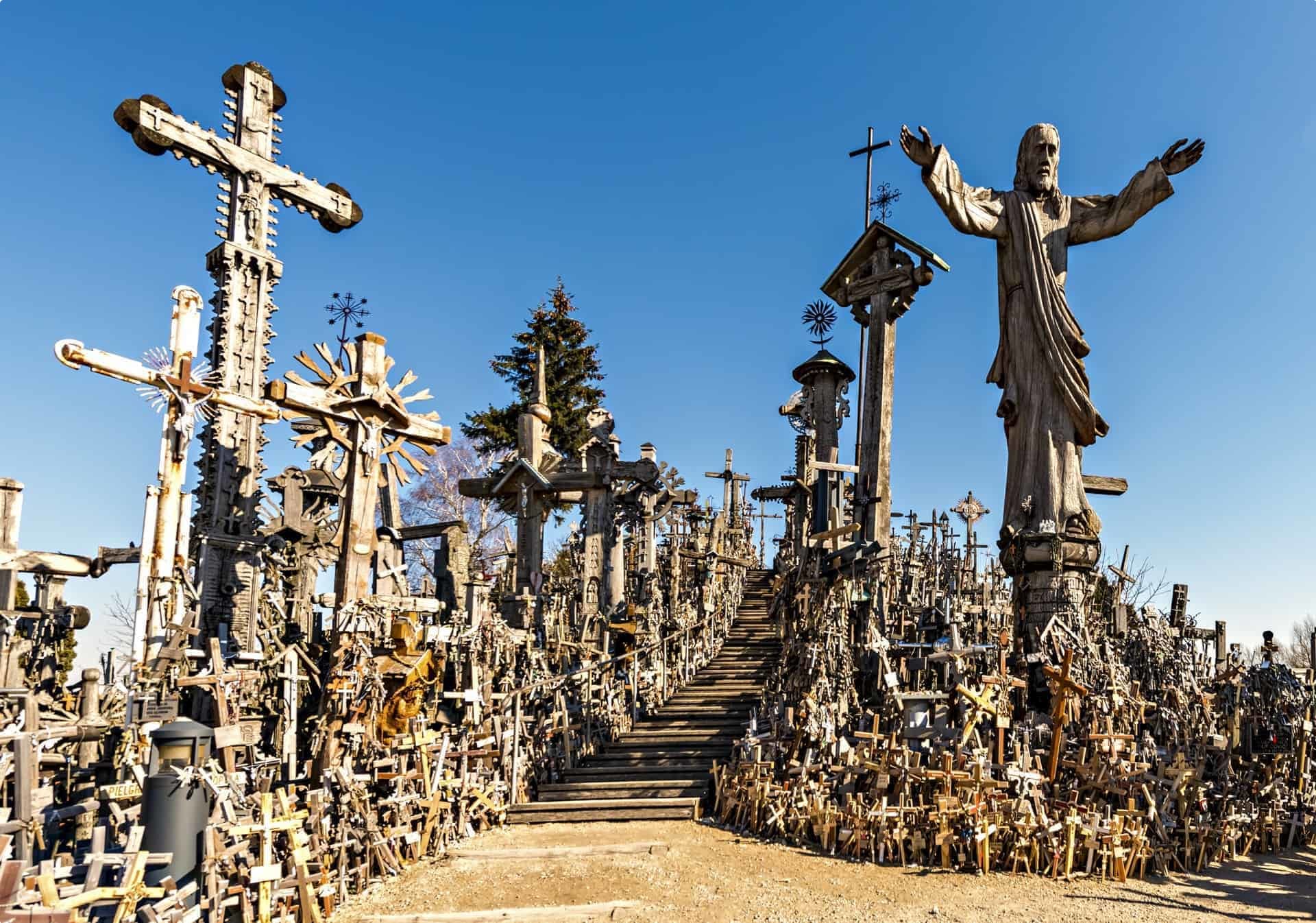
1. Grutas Park, Vilnius
Grutas Park is a sculpture garden featuring statues and ideological relics from the Soviet occupation. Interestingly, it is organised into ‘spheres’, such as the Totalitarian Sphere, which holds statues of key Communist thinkers. There’s also the Terror Sphere, with statues referencing the founders of the Communist Party of Lithuania and officers of the Red Army.
2. Museum of Genocide Victims, Vilnius
This Museum, also called the KGB Museum, is housed in the imposing building that served as their headquarters from 1941 until 1991. One part of the Museum covers the resistance against Soviet occupiers, and everyday life under the regime, while the other is the prison and torture chambers, located deep within the basement. Some cells now contain piles of documents that were shredded by the Russians as the Soviet Union dissolved.
3. Stebuklas tile, Vilnius
The Stebuklas, or ‘Miracle’ tile is an unassuming monument that marks the end point of the 1989 human chain. While here, why not indulge in a bit of folklore: stand on the tile, make a wish, and then spin 360 degrees. Apparently, your wish will come true.
4. Kaunas
Kaunas is the former Lithuanian capital. It was founded in the 13th century and is often considered to be more “Lithuanian” than Vilnius, and yet it is frequently overlooked by tourists. With a charming Old Town and stone castle, and pretty pastel-hued houses nestled among great churches, Kaunas is worth the trip. It is the unlikely site of some impressive interwar modernist architecture, too – and it continues to surprise with its quirky street art and cute cafes. Located in south-central Lithuania, the city also holds a dark part of Lithuania’s history. It once had a large, vibrant Jewish population, but more than half were killed by Nazis in the second world war. Nazi Germany established the Kovno ghetto here to hold the Lithuanian Jews during the Holocaust.
5. Hill of the Crosses, Siauliai
The Hill of Crosses is a site of pilgrimage located in Siauliai, northern Lithuania. Crosses, crucifixes, rosaries, effigies, and statues of the Virgin Mary are left here on a hill – a practice with mysterious origins. It’s believed the first crosses were placed here following the 1831 Uprising. This Uprising originated with an armed rebellion in Poland against the Russian Empire. Large segments of societies in Lithuania, Belarus and Ukraine soon joined. But the Russian Empire crushed the rebellion, and declared Poland an integral part of Russia. The practice of leaving crosses and token has continued since. Incredibly, a 2006 count recorded over 100,000 crosses.
6. Trakai
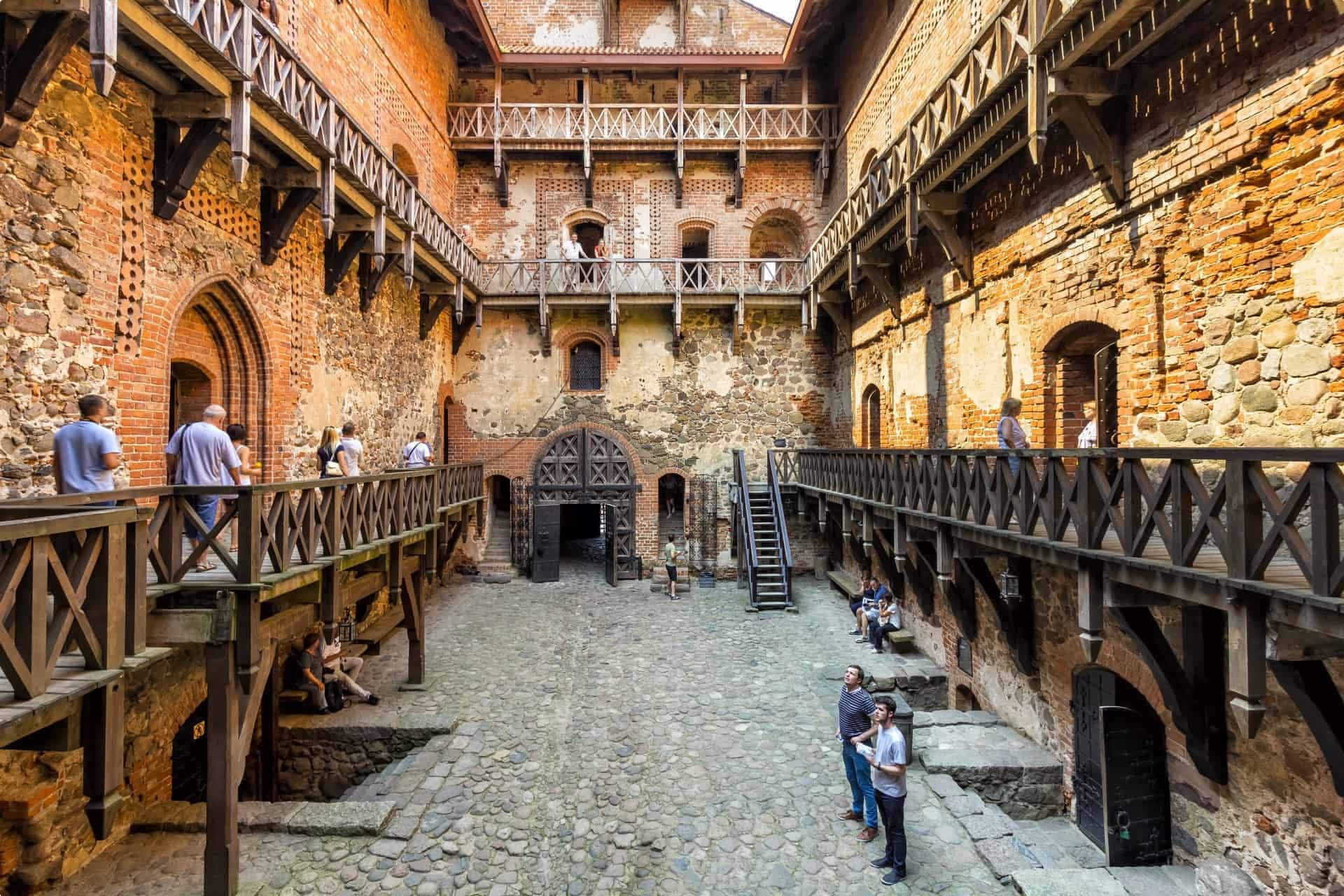
Trakai is home to a 14th century island castle. It was the residence of Grand Duke Kęstutis, until an attack by the Teutonic Knights in 1377. Kęstutis was assassinated and the castle besieged in the power struggle between Jogaila and Vytautas for the Duchy. But they reconciled, and a second phase of construction continued until 1409. During this phase, two wings were added and a six-storey tower built. Construction during this phase is described as Gothic, with some Romanesque features. A third phase of construction marks the strategic development of Trakai. Walls were fortified, defence towers erected, and part of the castle acted as a prison.
The castle lost its significance following the Battle of Grunwald. It was transferred into a residence, and bears traces of the frescoes and Renaissance decorations added to the interiors during this time. It was damaged in war in the 17th century and fell into disrepair, before a 19th century reconstruction. Trakai Castle is now a major tourist attraction.
Highlights of the Baltic States

Learn more about the history and culture of Latvia, Estonia and Lithuania on Odyssey Travellers Baltic States small group escorted tour. We visit the cultural and historic landmarks of these diverse countries, and enjoy the insights of our local guides. This memorable tour begins in Berlin, where we visit monuments of World War II and the Soviet Era. While here, we also take time out to visit Potsdam, home to Sanssouci – the summer palace of Frederick the Great. After Berlin, we travel by train to Warsaw, Poland. We witness the impacts of war and the efforts to rebuild and reclaim Polish culture. We learn about famous composer Chopin, and enjoy a performance on folk music. Before we make our way into Lithuania, we also get to experience regional Poland, including the beautiful, lake-side village of Mikolajki.
Our journey through the Baltic states takes us from Vilnius to Riga to Tallinn. We visit crumbling castles, historic wonders and learn about these unique cultures. But our tour doesn’t end here. Next, we travel to Helsinki by ferry and view the Suomenlinna fortress. Our tour concludes in the incredible St Petersburg. A walking tour will orient us in this magical city, and we will also drift along its canals. We have a lecture on Russian history, and visit museums. This small group tour provides the opportunity to explore not only the Russian states, but the nations that have influenced them and made them what they are today.
Tours to the Baltic States
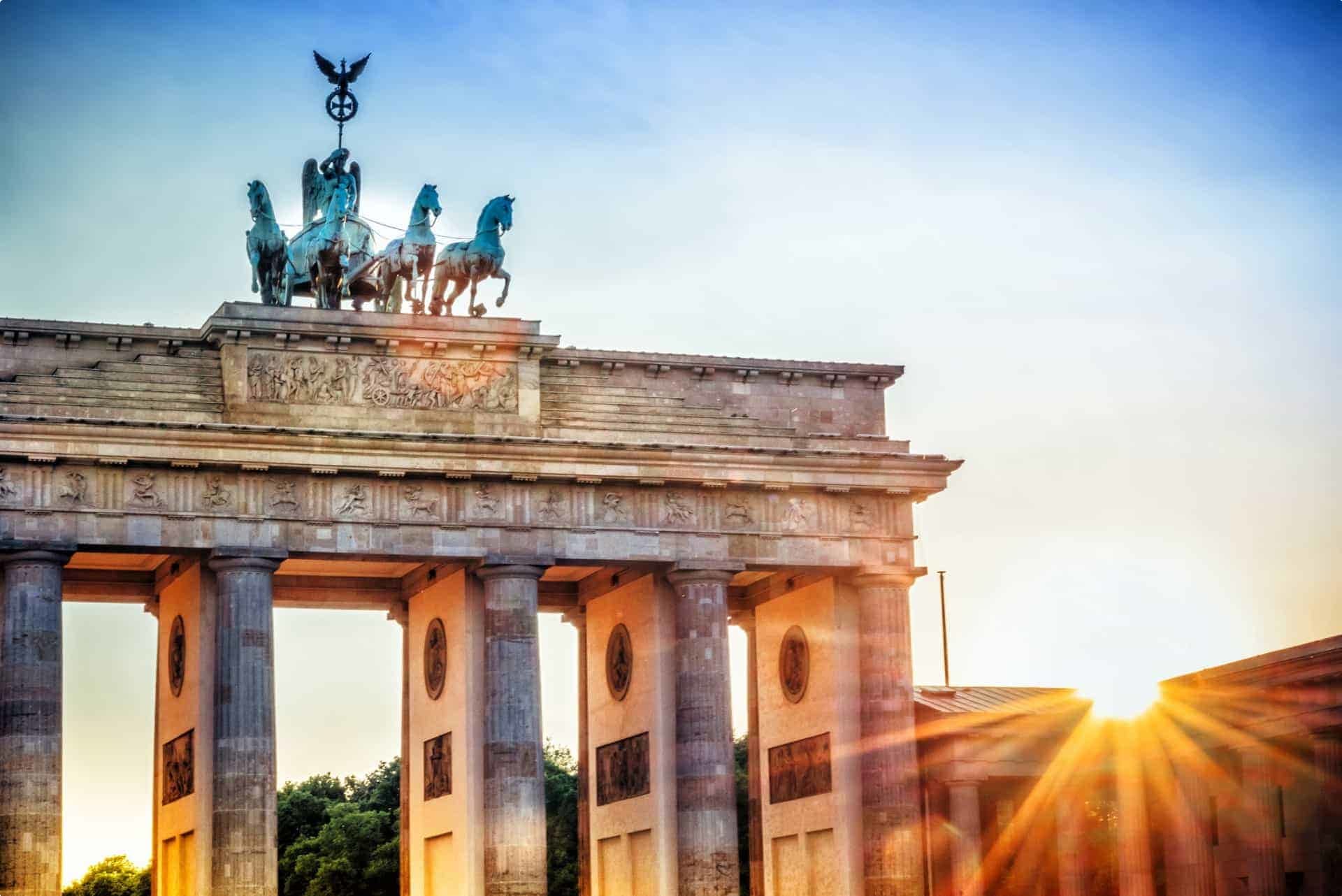
Odyssey offers more than 140 scheduled small group tours to people from all over the world. Odyssey travellers share our passion for exploring and learning. The 21 day Baltics small group escorted tour of Latvia, Estonia, Lithuania is offered in May each year. It’s just in time for their balmy summer – perfect conditions to explore this unique and proud part of the world.
For more details about the Baltics small group escorted tour, follow this link to the tour page. If you’re keen to experience this tour, please call or send an email. Or, to book, simply fill in the form on the right hand side of the tour page.
About Odyssey Traveller: small group educational tours for seniors & mature travellers
Odyssey Traveller is a not-for-profit organisation offering Australia and New Zealand’s most comprehensive educational tour programs. We provide worldwide experiences for mature travellers who are keen to blend a love of travel with a thirst for knowledge, and we welcome participants from any country.
Odyssey Traveller is famous for our small groups, and we average eight participants per tour. Our maximum group size is eighteen people, which ensures quality, flexibility and care that is tailored to our clients. We specialise in small group tours for the senior traveller who is seeking adventure or is curious about the world we live in. Typically, our clients begin travelling with us from their mid 50’s onward. Both couples and singles are welcome.

Odyssey Traveller is committed to charitable activities that support the environment and cultural development of Australian and New Zealand communities. Accordingly, we are pleased to announce that since 2012, Odyssey has been awarding $10,000 Equity & Merit Cash Scholarships each year. Scholarships are awarded on the basis of academic performance and demonstrated financial need. We award at least one scholarship per year. We are supported through our educational travel programs, and your participation helps Odyssey achieve its goals.
For more information on Odyssey Traveller and our educational small group tours, visit our website. Alternatively, please call or send an email. We’d love to hear from you!
Related Tours
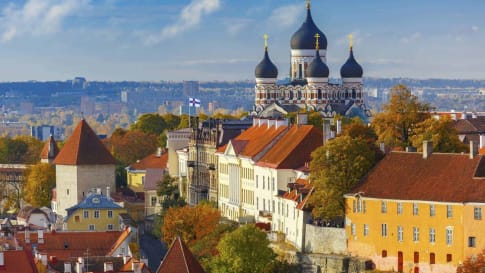
21 days
Sep, MayBaltics Small Group Escorted Tour: Latvia, Estonia, Lithuania
Visiting Estonia, Finland
An escorted small group tour to the Baltic States of Europe that explores the key destinations of this region starting in Berlin, then making its way through Poland, Estonia, Latvia, Lithuania, Finland and concluding in St. Petersburg. Each day has scheduled itineraries supported by local guides who share knowledge and authentic experiences of the places visited. This is small group travelling to the Baltics for like minded people.
From A$13,995 AUD
View Tour
12 days
Oct, MayBerlin walking tour
Visiting Germany
Enjoy an escorted walking tour of Berlin. This small group holiday is for like minded people, mature couples or solo travelers who enjoy getting off the beaten track and exploring with some adventure. The itineraries set for each day follow sections of the Berlin Wall, whilst local guides realise authentic experiences found in this amazing city.
From A$8,745 AUD
View Tour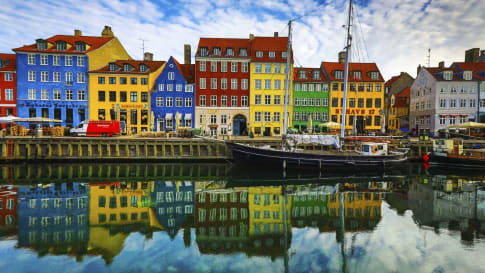
13 days
Jun, SepScandinavia tours for mature travellers
Visiting Denmark, Norway
Uncover on a small group tour for couples and solo travellers, a Viking past and view of the world’s biggest fjords on this journey through Scandinavia. In low-lying Denmark our small group journey takes us to visit the Zeeland, the sea land, and our program includes the vibrant capital of Copenhagen. In Norway we travel through endless forests, skirting great fjords to Bergen.
From A$14,995 AUD
View Tour